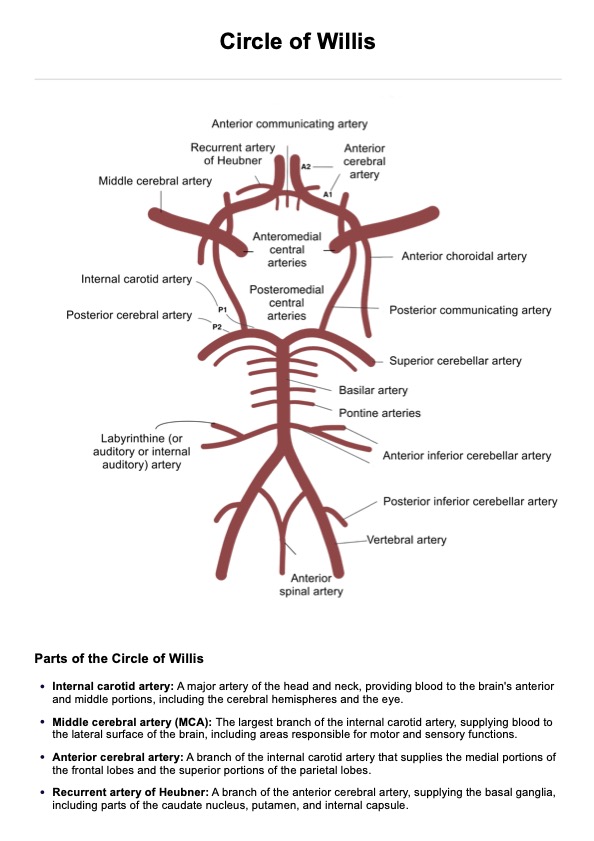If the circle of Willis is blocked, it can often compensate by rerouting blood flow through alternate pathways. However, if this collateral circulation is insufficient, it may lead to reduced blood supply to parts of the brain, causing ischemia or a stroke.

Circle of Willis Diagram
Download a free Circle of Willis diagram and better understand its function, structure, and significance in the brain's circulatory system.
Use Template
Circle of Willis Diagram Template
Commonly asked questions
The circle of Willis is a ring of interconnected arteries at the base of the brain. It ensures consistent blood flow by rerouting blood if a blockage or narrowing occurs in one of the main arteries supplying the brain.
The most common anomaly is hypoplasia (underdevelopment) of one or both posterior communicating arteries (PCOMs). This can affect the circle’s ability to provide collateral blood flow.
EHR and practice management software
Get started for free
*No credit card required
Free
$0/usd
Unlimited clients
Telehealth
1GB of storage
Client portal text
Automated billing and online payments











